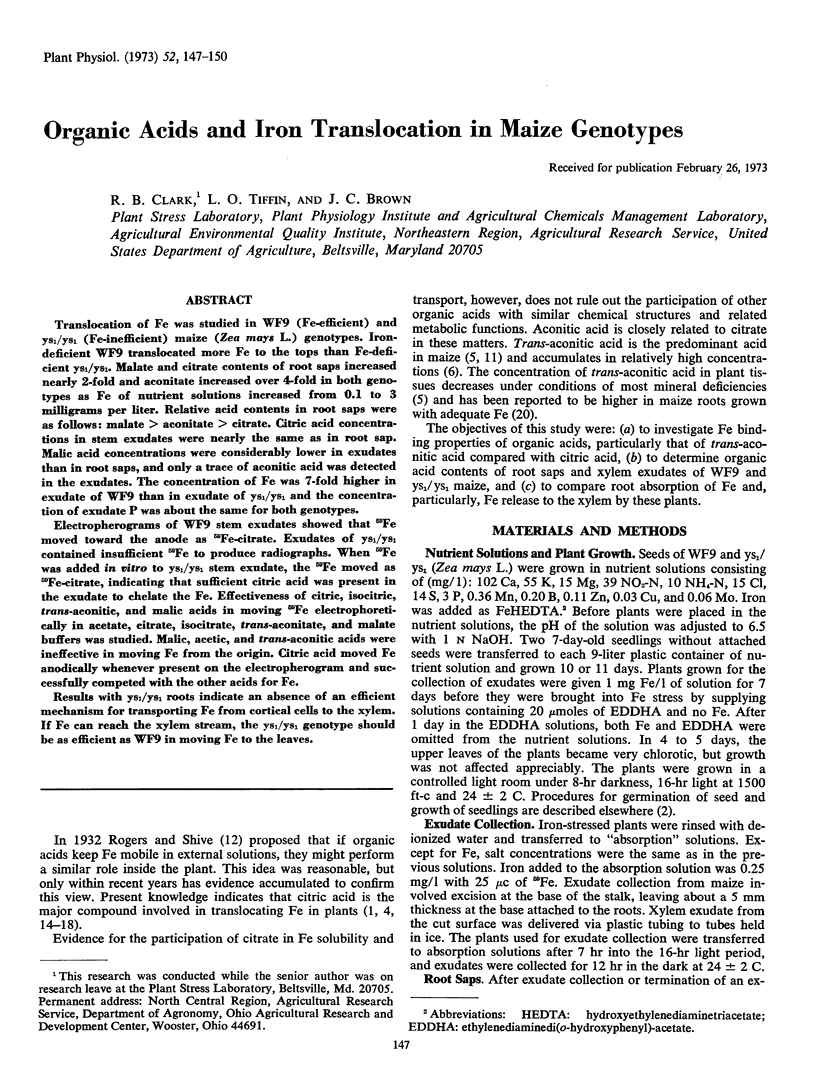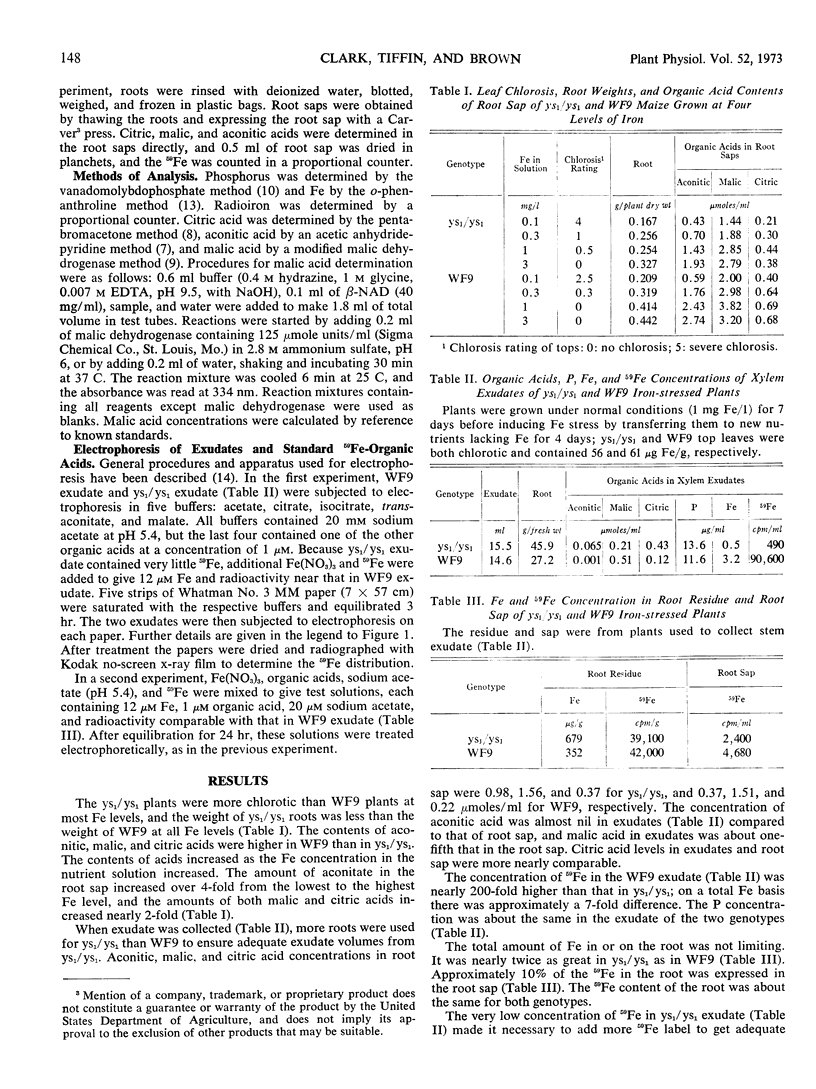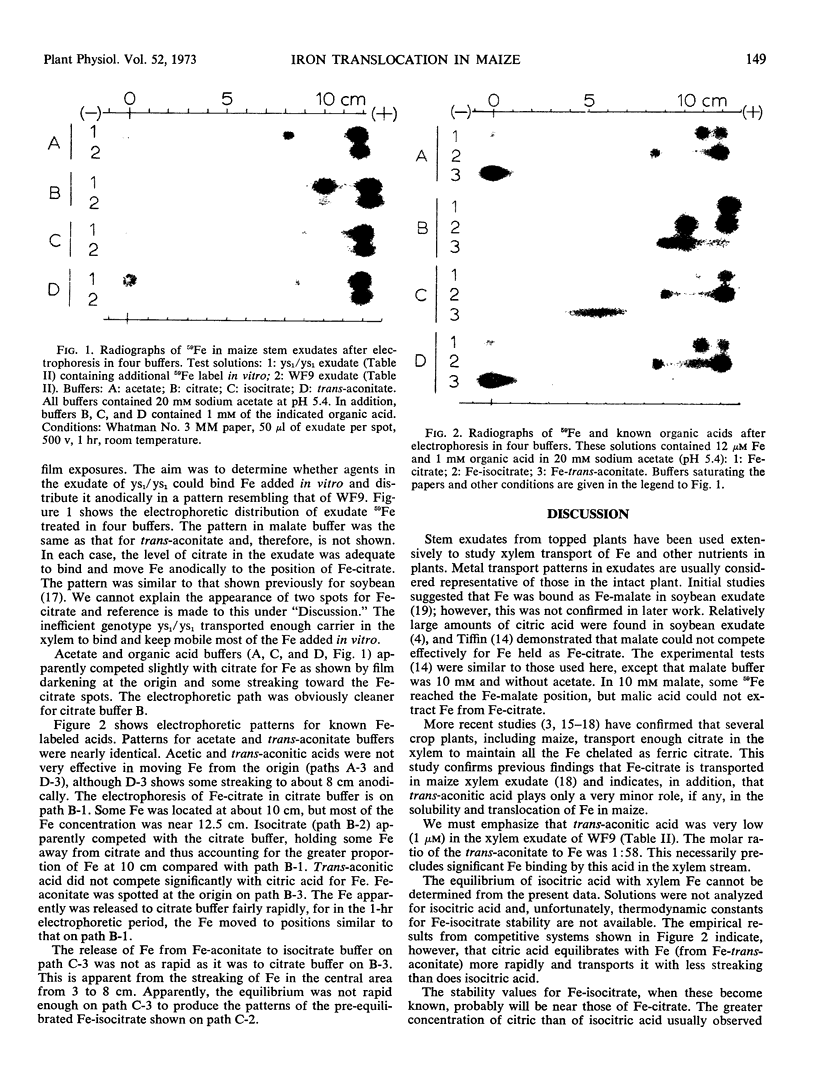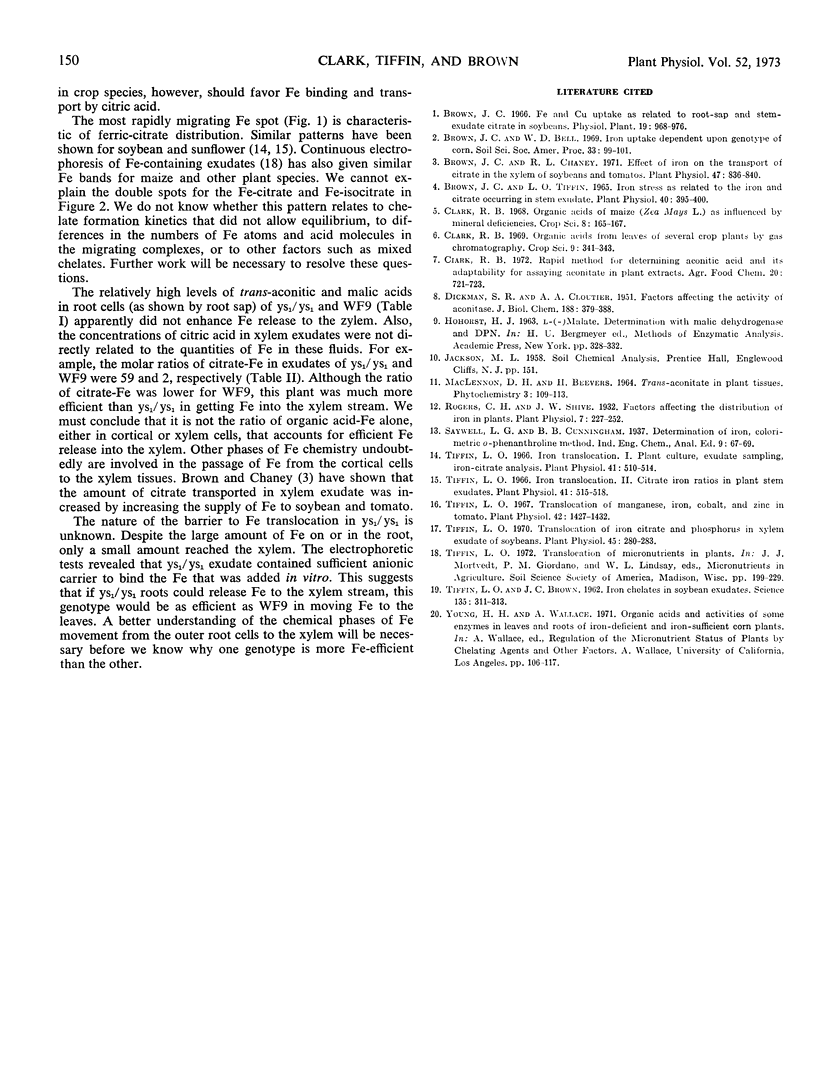Abstract
Translocation of Fe was studied in WF9 (Fe-efficient) and ys1/ys1 (Fe-inefficient) maize (Zea mays L.) genotypes. Iron-deficient WF9 translocated more Fe to the tops than Fe-deficient ys1/ys1. Malate and citrate contents of root saps increased nearly 2-fold and aconitate increased over 4-fold in both genotypes as Fe of nutrient solutions increased from 0.1 to 3 milligrams per liter. Relative acid contents in root saps were as follows: malate > aconitate > citrate. Citric acid concentrations in stem exudates were nearly the same as in root sap. Malic acid concentrations were considerably lower in exudates than in root saps, and only a trace of aconitic acid was detected in the exudates. The concentration of Fe was 7-fold higher in exudate of WF9 than in exudate of ys1/ys1 and the concentration of exudate P was about the same for both genotypes.
Electropherograms of WF9 stem exudates showed that 59Fe moved toward the anode as 59Fe-citrate. Exudates of ys1/ys1 contained insufficient 59Fe to produce radiographs. When 59Fe was added in vitro to ys1/ys1 stem exudate, the 59Fe moved as 59Fe-citrate, indicating that sufficient citric acid was present in the exudate to chelate the Fe. Effectiveness of citric, isocitric, trans-aconitic, and malic acids in moving 59Fe electrophoretically in acetate, citrate, isocitrate, trans-aconitate, and malate buffers was studied. Malic, acetic, and trans-aconitic acids were ineffective in moving Fe from the origin. Citric acid moved Fe anodically whenever present on the electropherogram and successfully competed with the other acids for Fe.
Results with ys1/ys1 roots indicate an absence of an efficient mechanism for transporting Fe from cortical cells to the xylem. If Fe can reach the xylem stream, the ys1/ys1 genotype should be as efficient as WF9 in moving Fe to the leaves.
Full text
PDF



Images in this article
Selected References
These references are in PubMed. This may not be the complete list of references from this article.
- Brown J. C., Chaney R. L. Effect of iron on the transport of citrate into the xylem of soybeans and tomatoes. Plant Physiol. 1971 Jun;47(6):836–840. doi: 10.1104/pp.47.6.836. [DOI] [PMC free article] [PubMed] [Google Scholar]
- Brown J. C., Tiffin L. O. Iron Stress as Related to the Iron and Citrate Occurring in Stem Exudate. Plant Physiol. 1965 Mar;40(2):395–400. doi: 10.1104/pp.40.2.395. [DOI] [PMC free article] [PubMed] [Google Scholar]
- DICKMAN S. R., CLOUTIER A. A. Factors affecting the activity of aconitase. J Biol Chem. 1951 Jan;188(1):379–388. [PubMed] [Google Scholar]
- Rogers C. H., Shive J. W. FACTORS AFFECTING THE DISTRIBUTION OF IRON IN PLANTS. Plant Physiol. 1932 Apr;7(2):227–252. doi: 10.1104/pp.7.2.227. [DOI] [PMC free article] [PubMed] [Google Scholar]
- Tiffin L. O. Iron Translocation II. Citrate/Iron Ratios in Plant Stem Exudates. Plant Physiol. 1966 Mar;41(3):515–518. doi: 10.1104/pp.41.3.515. [DOI] [PMC free article] [PubMed] [Google Scholar]
- Tiffin L. O. Iron translocation I. Plant culture, exudate sampling, iron-citrate analysis. Plant Physiol. 1966 Mar;41(3):510–514. doi: 10.1104/pp.41.3.510. [DOI] [PMC free article] [PubMed] [Google Scholar]
- Tiffin L. O. Translocation of iron citrate and phosphorus in xylem exudate of soybean. Plant Physiol. 1970 Mar;45(3):280–283. doi: 10.1104/pp.45.3.280. [DOI] [PMC free article] [PubMed] [Google Scholar]
- Tiffin L. O. Translocation of manganese, iron, cobalt, and zinc in tomato. Plant Physiol. 1967 Oct;42(10):1427–1432. doi: 10.1104/pp.42.10.1427. [DOI] [PMC free article] [PubMed] [Google Scholar]




